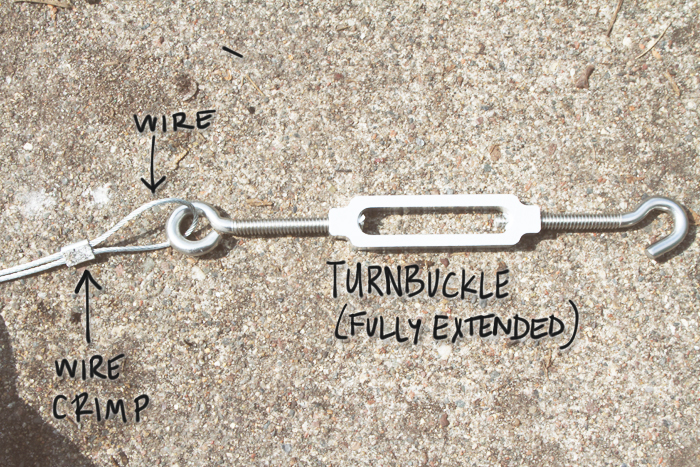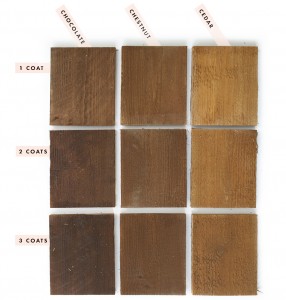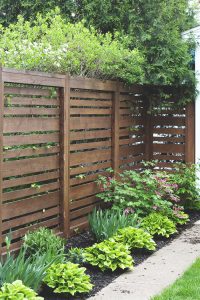
Over the winter, my old man and I did something pretty dumb. Let me start by saying we had really good intentions. We wanted to make a new annual Allen Christmas tradish and burn down our Christmas tree the day after New Year’s day, duh. It sounded like a cool and fun idea, and it made for a good excuse to drink some brews and have a winter fire in the backyard. I tried to think responsibly and logically about this; I knew the Christmas tree was dry, so I figured I’d cut it into quarters, and we could burn it in sections to minimize the blaze. That sounds reasonable to me. Unfortunately, even quartered dried-up pine trees like to burn fast and huge no matter what, like in a almost burn your house down sort of way. See below:

We were lucky that we didn’t burn the house down. Jeff was super manly and grabbed the burning tree and threw it out into the middle of the yard before any major damage was done. We did however lose a few strings of our beloved party lights. They were melting the second that tree caught fire. The lights have sat lifeless and out of commission for the rest of the winter :(
Have no fear, spring is here (or whatever the eff you wanna call it). I thought it would be a good time to get those party lights hung back up so we’d be ready for spring time back yard hang seshes.
When I first hung the party lights I never thought that they would become a permanent fixture in the backyard. We were having some buddies over for a BBQ and I thought it would be fun to have some cool lights to illuminate our party. I had only hung them up with twine (thinking it was temporary), a few weeks later I had upgraded to string (big upgrade, I know) and there they sat until I burned them down.
I was no dummy, though. Once we decided the lights were staying we knew that eventually we’d (I) have to figure out a away to give the lights more support and tension. The best solution that I could come up with was to hang a taught wire over the backyard and then clip the G40 clear bulbs onto the wire, thus relieving the string lights from supporting their own weight (plus tension) and leaving me with a taught dependable party light solution.
I thought in case any of you might want to try out some party lights in your backyard these set of instructions might come in handy. I didn’t find much on the subject when I was doing research on the interwebz.

|
Supply List Wire Screw Hook Wire Eye Lag (aka eyelet screw) Turnbucklehammer Flat Head Screwdriver Wire Clipper Drill Drill Bits Wire Crimps |

The key to this rig is in the mighty turnbuckle. The turnbuckle I am using is called a “J-hook,” meaning that there is the open hook on one end and the eyelet on the other. The hook links into the wire eye lag screw (aka eyelet screws) I have attached to the garage. The wire and crimp get attached to the eyelet end of the turnbuckle and then the wire connects to the hook on the house. Don’t worry, there’s a handy diagram below so you can get the whole picture here.
The important part that I wanted to share with you here is that you can get these little crimps to attach to the wire. They allow you to turn your wire into a loop. In the instance above, I wrapped the wire around the eyelet of my turnbuckle and then crimped the loop shut. Crimping is easy, once you’ve got your wire and crimp in place you just smash it shut against a hard surface using a hammer and you are good to go.

All sorts of places sell clear G40 bulbs these days and they range in price from super expensive to super affordable. I picked my “Room Essentials” set up at target, they were 12.99 for a string of 25. For the backyard I needed 4 strings, 2 extending from each corner of the garage to the house.

I hope that this helps explain my method. Remember, in my example I strung my lights from a single point where I used the hook screw. Two wires were attached going across my backyard at different angles and are anchored to my garage with two wire eye lags (eyelet screws).
In my example I have two wire eye lags attached to my garage on opposite ends (about 25 feet apart). If you wanted to go crazy you could attach even more wire eye lags and run more wires to give your yard a “canopy of lights” vibe. For the purpose of me explaining this though, imagine we only have two attached to a fixed point (aka my garage). You will also need to attach a screw hook to the location (usually opposite the fixed point) where you want your lights to hang over (in my case it was the house). You will run two wires both with loops and crimps on the end. You will loop one end of both wires over the screw hook (attached to the house). The other end of the wires will attach to a turnbuckle and then to the wire eye lag on the house. Of course both wires won’t be attached to the same turnbuckle, they will both be attached to separate turnbuckles and then in turn attached to separate wire eye lags (attached to the garage).
Before attaching the wires to the eyelet end of the turbuckle with a loop and crimp make sure to fully extend the turnbuckle (as pictured in the above photos). Once extended use the hook end of the turnbuckle to hook into the wire eye lag (aka eyelet screw). Tighten up the center of the turnbuckle until you reach the preferred taughtness of your wire. If the turnbuckle gets difficult to twist with your hand, insert a flat head screwdriver for leverage. Lastly clip on the lightbulbs stringing them up and down the length of your wire.
Huzaah! You now have a backyard with super cool party vibes.












I have target party lights in my yard too. They are near the house over the patio and they run from a tree to the garage over top of the square foot gardens along the side of the yard. They are great because they make the gardens visible from the patio after dark, so I can enjoy at my gardens day and night. I noticed that the lights above the garden survived the winter, but are looking very droopy in the middle from holding their own weight. I thought I needed to put up a pole in the middle and was wondering how that would go. I like this idea much better. Thank you.
Yes, that’s what mine were doing too, besides being burned up. They were getting all saggy and droopy from the snow and the winter. This definitely gave them new life.
Wow. We have party lights strung up over our patio, and it had NEVER occurred to me to string them on twine/wire to alleviate sagging. This is so simple and genius!!
Also, good to know about dried-up old Christmas trees.
Yes, you gotta try it if you are considering having those party light around for awhile. Who knew trees burned?
Have you tried LED patio lights? Christmaslightsetc.com has LED – like the Christmas lights, but large for patio. LED never get hot.
I thought of the wire idea over the winter holidays. I strung up a set of Christmas lights from one tree to the other, wrapping the ends around some branches. Worked great, for a short time. Problem was them darn squirrels! They chewed off some of the bulbs (and buried them) and then chewed through the wires. Lots of damage, difficult to repair. Moral of the story, at least in my yard, is to keep the wire/cable close to the tree and the wire from the lights far enough away so the critters don’t feast on them.
The turnbuckles are a great idea. I’ve never needed to string lights using a wire so far (just along beams and that type of thing) but the thought had occurred to me. Using the turnbuckle for tensioning takes it even further.
Folks might also be interested in this blog post I thought was pretty good about DIY poles to hang lights around a patio: http://brightjuly.blogspot.com/2012/09/diy-outdoor-string-lights.html
Very cool diagram & instruction. Helped me to figure out what I wanted to do for hanging party lights. Thanks for the tip.
Awesome, so glad to hear it helped ;)
love this I have been looking for directions on how to hang our lights with wire between our house for the deck, then once this is done I thought I would maybe do some faux green leaves to disguise the wire during the day to make it feel kind of like a pergola with hanging plants, do you think the lights would burn the leaves? just thinking….
party lights We got a couple of these to add to our band’s stage lights. We use them more like accent lights. They’re small and really affordable. We like them.
What gauge wire did you use?
I was wondering the same. factors to consider when choosing which guage wire to use include:
1) the weight of the lights to be hung
2) the distance to be spanned, (from the garage to the house). Greater distance may call for a heavier guage to eliminate sag.9o
I plan to use 1/16 inch (which has tensile strength of 480 lbs) because patio lights are not heavy and I only need to span 20 ft.
Thanks for the plans, very helpful.
The wire in the picture looks like 1/8 inch. I plan to use 1/16 inch wire (tensile strength of 480 lbs).
This should be more than enough to support the weight of the wire itself, the added weight of the lights.
Using 1/16 vs 1/8 wire will he easier to work with and since I only need to span 20 ft. I can easily apply tension to the wire to eliminate any sag without worrying about exceeding the tensile strength.
This setup worked perfect for us. Attached our eye lag bolts to two trees. Looks great and simple to setup.
Thanks,this was very helpful.
Hi Scoops! I love your hand-sketched diagram, instructions and commentary. I’m a DIY gal and every website or post on the subject was completely worthless. The details you provided were extremely beneficial. You are a fantastic individual. Keep sharing your gifts and I will do the same!
Thanks so much for this!! It helped so much!! Took two trips to the hardware store but it was all worth it… it turned out looking amazing!! Had two 100 ft. Strands of G50 globe lights and hung each around both sides of backyard. Ready for the party tomorrow!! Looking forward to what guests have to say. thanks again:)
Where did you find the wire clamps?
At the Hardware store.
hi
what gauge wire did you use?
did you get only galvanized products?
thanks, your post was exactly what I was looking for!
-F
Thanks for this. I used 16 guage galvanized wire and eyeless turnbuckles with careeners to connect to the turnbuckle – but it was exactly the same idea. Thanks for the listing of supplies – helped me with creating the plan for my back yard.
Do you think string party lights, even the ones that say they are for “outdoor” use, need to come down for the winter season, or come down at all? People put up Xmas lights and leave them up all year sometimes (gross). I was just wondering because these bulbs are so fragile. If I can avoid taking them down and messing with them at all, I will. I live in the Pacific Northwest, so we don’t get snow in the winter, just cold rain.
Thanks. looks like this will help me. One suggestion, although I haven’t started this project, is using grapples instead of crimps. It seems these would work better to secure that loop. We’ll see!
Alison — Super-cute! Thanks for the tips, my husband and I just got some great lights hung up using your method. Our lights are slightly more durable outdoor lights from Costco. We’re wondering, though — does this hold up well through the winter? Or should it be taken down? (For reference, we live in Wisconsin, so winter can get snowy and windy!)
Hey Christina! I leave mine up all year long, and we’ve upgraded to some more heavy duty bistro style lights as well. They do fine in the winter and they look so pretty with a coating of snow.
Great info. I am considering doing this over my deck but ligts are to be strung via Palm trees that have some sway down here in Florida. I am thinking that I may need turnbuckles with some sort of spring tension – do you know if these are available. Thx Kurt
Do you remove the string lights entirely during the winter months.. or just remove the bulbs? We just added commercial grade string lights to our backyard and it will be their first winter. Wondering if I need to remove the Bulbs…
What size screw hooks & turnbuckles did you use? I checked out homedepot online and was overwhelmed with the variety of options for the turnbuckles alone! How do I know which size is the right one? And which material should it be made of? Help?
Also – I’ve seen on another blog, where they used a turnbuckle at both ends of every wire. Is that really necessary? Do you only need 1 at either end of the entire line of zig-zagging?
Any advice would be appreciated! Thank you!